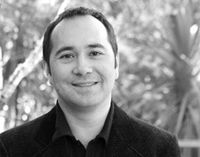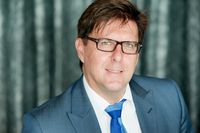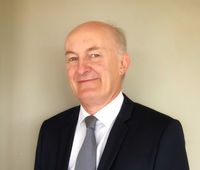Central Auckland, East Auckland, North Auckland, South Auckland, West Auckland > Private Hospitals & Specialists >
Auckland Orthopaedic Group
Private Service, Orthopaedics
Today
8:00 AM to 5:00 PM.
Description
We are a group of friendly Orthopaedic Surgeons, specialising in all areas of orthopaedics. Radiology, Physiotherapy, and Podiatry are also available on-site.
Please phone a consultant on their individual phone numbers to organise an appointment (left hand side of this page).
What is Orthopaedics?
This is an area that deals with conditions of the musculoskeletal system (disorders of bones and joints of the limbs and spine). The specialty covers a range of different types of conditions starting with congenital (conditions which children are born with) through to degenerative (conditions relating to the wearing out of joints). The field of orthopaedics covers trauma where bones are broken or injuries are sustained to limbs.
Consultants
-

Mr Adam Dalgleish
Orthopaedic Surgeon - Shoulder & Knee Specialist
-

Mr Kevin Karpik
Orthopaedic Surgeon - Joint Replacement / Reconstruction / Sports Medicine
-

Mr Ivan Spika
Orthopaedic Surgeon - Joint Replacement/ Hip & Knee/ Lower Limb/ Arthroscopic Surgery
-

Mr Richard Street
Orthopaedic Surgeon - Joint Replacement / Hip, Knee, Foot & Ankle Specialist
-

Mr Chris Taylor
Orthopaedic Surgeon - Hand & Upper Limb Specialist
Referral Expectations
You need to bring with you to your appointment:
4. Your ACC number and the date of injury if you have one.
As they will discuss with you, if your treatment requires surgery, Mr Street, Mr Taylor and Mr Karpik usually work with Anaesthesia Auckland Ltd. In particular, they usually work with the following anaesthetists:
Mr Street
Dr David Chamley
Mr Taylor
Dr Matthew Robinson
Mr Karpik's Anaesthestists are
Dr Rob Burrell
Dr Gerry Willemsen
Dr Mark Reddy
Dr Simeon Eaton
Hours
8:00 AM to 5:00 PM.
| Mon – Fri | 8:00 AM – 5:00 PM |
|---|
Procedures / Treatments
For elderly patients joint replacement surgery is commonly required to treat damaged joints from wearing out, arthritis or other forms of joint disease including rheumatoid arthritis. In these procedures the damaged joint surface is removed and replaced with artificial surfaces normally made from metal (chromium cobalt alloy, titanium), plastic (high density polyethelene) or ceramic which act as alternate bearing surfaces for the damaged joint. These operations are major procedures which require the patient to be in hospital for several days and followed by a significant period of rehabilitation. The hospital has several ways of approaching the procedure for replacement and the specifics for the procedure will be covered at the time of assessment and booking of surgery. Occasionally blood transfusions are required; if you have some concerns raise this with your surgeon during consultation. Ankle Replacement An incision (cut) is made in the front of, and several smaller cuts on the outside of, the ankle. The damaged ankle joint is replaced with a metal and plastic implant. Hip Replacement An incision (cut) is made on the side of the thigh to allow the surgeon access to the hip joint. The diseased and damaged parts of the hip joint are removed and replaced with smooth, artificial metal ‘ball’ and plastic ‘socket’ parts. Knee Replacement An incision (cut) is made on the front of the knee to allow the surgeon access to the knee joint. The damaged and painful areas of the thigh bone (femur) and lower leg bone (tibia), including the knee joint, are removed and replaced with metal and plastic parts.
For elderly patients joint replacement surgery is commonly required to treat damaged joints from wearing out, arthritis or other forms of joint disease including rheumatoid arthritis. In these procedures the damaged joint surface is removed and replaced with artificial surfaces normally made from metal (chromium cobalt alloy, titanium), plastic (high density polyethelene) or ceramic which act as alternate bearing surfaces for the damaged joint. These operations are major procedures which require the patient to be in hospital for several days and followed by a significant period of rehabilitation. The hospital has several ways of approaching the procedure for replacement and the specifics for the procedure will be covered at the time of assessment and booking of surgery. Occasionally blood transfusions are required; if you have some concerns raise this with your surgeon during consultation. Ankle Replacement An incision (cut) is made in the front of, and several smaller cuts on the outside of, the ankle. The damaged ankle joint is replaced with a metal and plastic implant. Hip Replacement An incision (cut) is made on the side of the thigh to allow the surgeon access to the hip joint. The diseased and damaged parts of the hip joint are removed and replaced with smooth, artificial metal ‘ball’ and plastic ‘socket’ parts. Knee Replacement An incision (cut) is made on the front of the knee to allow the surgeon access to the knee joint. The damaged and painful areas of the thigh bone (femur) and lower leg bone (tibia), including the knee joint, are removed and replaced with metal and plastic parts.
Occasionally blood transfusions are required; if you have some concerns raise this with your surgeon during consultation.
Ankle Replacement
An incision (cut) is made in the front of, and several smaller cuts on the outside of, the ankle. The damaged ankle joint is replaced with a metal and plastic implant.
Hip Replacement
An incision (cut) is made on the side of the thigh to allow the surgeon access to the hip joint. The diseased and damaged parts of the hip joint are removed and replaced with smooth, artificial metal ‘ball’ and plastic ‘socket’ parts.
Knee Replacement
An incision (cut) is made on the front of the knee to allow the surgeon access to the knee joint. The damaged and painful areas of the thigh bone (femur) and lower leg bone (tibia), including the knee joint, are removed and replaced with metal and plastic parts.
The division of a crooked or bent bone to improve alignment of the limb. These procedures normally involve some form of internal fixation, such as rods or plates, or external fixation which involves external wires and pins to hold the bone. The type of procedure for fixation will be explained when the surgery is planned.
The division of a crooked or bent bone to improve alignment of the limb. These procedures normally involve some form of internal fixation, such as rods or plates, or external fixation which involves external wires and pins to hold the bone. The type of procedure for fixation will be explained when the surgery is planned.
Over the last 30 years a large number of orthopaedic procedures on joints can be performed using an arthroscope, where a fiber optic telescope is used to look inside the joint. Through this type of keyhole surgery fine instruments can be introduced through small incisions (portals) to allow surgery to be performed without the need for large cuts. This allows many procedures to be performed as a day stay and allows quicker return to normal function of the joint. Arthroscopic surgery is less painful than open surgery and decreases the risk of healing problems. Arthroscopy allows access to parts of the joints which can not be accessed by other types of surgery. Ankle Arthroscopy Two or three small incisions (cuts) are made in the ankle and a small telescopic instrument with a tiny camera attached (arthroscope) is inserted. This allows the surgeon to look inside the joint, identify problems and, in some cases, operate. Tiny instruments can be passed through the arthroscope to remove bony spurs, damaged cartilage or inflamed tissue. Hip Arthroscopy Small incisions (cuts) are made in the hip area and a small telescopic instrument with a tiny camera attached (arthroscope) is inserted. This allows the surgeon to look inside the joint, identify problems and, in some cases, operate. Tiny instruments can be passed through the arthroscope to remove loose, damaged or inflamed tissue. Knee Arthroscopy Several small incisions (cuts) are made on the knee through which is inserted a small telescopic instrument with a tiny camera attached (arthroscope). This allows the surgeon to look inside the joint, identify problems and, in some cases, make repairs to damaged tissue. Shoulder Arthroscopy This surgery involves making several small incisions (cuts) on the shoulder through which is inserted a small telescopic instrument with a tiny camera attached (arthroscope). This allows the surgeon to look inside the shoulder, identify problems and, in some cases, make repairs to damaged tissue.
Over the last 30 years a large number of orthopaedic procedures on joints can be performed using an arthroscope, where a fiber optic telescope is used to look inside the joint. Through this type of keyhole surgery fine instruments can be introduced through small incisions (portals) to allow surgery to be performed without the need for large cuts. This allows many procedures to be performed as a day stay and allows quicker return to normal function of the joint. Arthroscopic surgery is less painful than open surgery and decreases the risk of healing problems. Arthroscopy allows access to parts of the joints which can not be accessed by other types of surgery. Ankle Arthroscopy Two or three small incisions (cuts) are made in the ankle and a small telescopic instrument with a tiny camera attached (arthroscope) is inserted. This allows the surgeon to look inside the joint, identify problems and, in some cases, operate. Tiny instruments can be passed through the arthroscope to remove bony spurs, damaged cartilage or inflamed tissue. Hip Arthroscopy Small incisions (cuts) are made in the hip area and a small telescopic instrument with a tiny camera attached (arthroscope) is inserted. This allows the surgeon to look inside the joint, identify problems and, in some cases, operate. Tiny instruments can be passed through the arthroscope to remove loose, damaged or inflamed tissue. Knee Arthroscopy Several small incisions (cuts) are made on the knee through which is inserted a small telescopic instrument with a tiny camera attached (arthroscope). This allows the surgeon to look inside the joint, identify problems and, in some cases, make repairs to damaged tissue. Shoulder Arthroscopy This surgery involves making several small incisions (cuts) on the shoulder through which is inserted a small telescopic instrument with a tiny camera attached (arthroscope). This allows the surgeon to look inside the shoulder, identify problems and, in some cases, make repairs to damaged tissue.
Arthroscopic surgery is less painful than open surgery and decreases the risk of healing problems. Arthroscopy allows access to parts of the joints which can not be accessed by other types of surgery.
Ankle Arthroscopy
Two or three small incisions (cuts) are made in the ankle and a small telescopic instrument with a tiny camera attached (arthroscope) is inserted. This allows the surgeon to look inside the joint, identify problems and, in some cases, operate. Tiny instruments can be passed through the arthroscope to remove bony spurs, damaged cartilage or inflamed tissue.
Hip Arthroscopy
Small incisions (cuts) are made in the hip area and a small telescopic instrument with a tiny camera attached (arthroscope) is inserted. This allows the surgeon to look inside the joint, identify problems and, in some cases, operate. Tiny instruments can be passed through the arthroscope to remove loose, damaged or inflamed tissue.
Knee Arthroscopy
Several small incisions (cuts) are made on the knee through which is inserted a small telescopic instrument with a tiny camera attached (arthroscope). This allows the surgeon to look inside the joint, identify problems and, in some cases, make repairs to damaged tissue.
Shoulder Arthroscopy
This surgery involves making several small incisions (cuts) on the shoulder through which is inserted a small telescopic instrument with a tiny camera attached (arthroscope). This allows the surgeon to look inside the shoulder, identify problems and, in some cases, make repairs to damaged tissue.
In many cases tendons will be lengthened to improve the muscle balance around a joint or tendons will be transferred to give overall better joint function. This occurs in children with neuromuscular conditions but also applies to a number of other conditions. Most of these procedures involve some sort of splintage after the surgery followed by a period of rehabilitation, normally supervised by a physiotherapist. Tendon Repair An incision (cut) is made over the damaged tendon. The damaged ends of the tendon are sewn together and, if necessary, reattached to surrounding tissue.
In many cases tendons will be lengthened to improve the muscle balance around a joint or tendons will be transferred to give overall better joint function. This occurs in children with neuromuscular conditions but also applies to a number of other conditions. Most of these procedures involve some sort of splintage after the surgery followed by a period of rehabilitation, normally supervised by a physiotherapist. Tendon Repair An incision (cut) is made over the damaged tendon. The damaged ends of the tendon are sewn together and, if necessary, reattached to surrounding tissue.
Most of these procedures involve some sort of splintage after the surgery followed by a period of rehabilitation, normally supervised by a physiotherapist.
Tendon Repair
An incision (cut) is made over the damaged tendon. The damaged ends of the tendon are sewn together and, if necessary, reattached to surrounding tissue.
Several small incisions (cuts) are made in the shoulder through which is inserted a small telescopic instrument with a tiny camera attached (arthroscope). The surgeon is then able to remove any bony spurs or inflamed tissue and mend torn tendons of the rotator cuff group.
Several small incisions (cuts) are made in the shoulder through which is inserted a small telescopic instrument with a tiny camera attached (arthroscope). The surgeon is then able to remove any bony spurs or inflamed tissue and mend torn tendons of the rotator cuff group.
Several small incisions (cuts) are made in the shoulder through which is inserted a small telescopic instrument with a tiny camera attached (arthroscope). The surgeon is then able to remove any bony spurs or inflamed tissue and mend torn tendons of the rotator cuff group.
A pinched nerve in the wrist that causes tingling, numbness and pain in your hand may require surgery to make more room for the nerve. This operation is usually performed under local anaesthetic (the area being treated is numb but you are awake). Surgery to relieve carpal tunnel syndrome involves making a cut (incision) from the middle of the palm of your hand to your wrist. Tissue that is pressing on the nerve is then cut to release the pressure.
A pinched nerve in the wrist that causes tingling, numbness and pain in your hand may require surgery to make more room for the nerve. This operation is usually performed under local anaesthetic (the area being treated is numb but you are awake). Surgery to relieve carpal tunnel syndrome involves making a cut (incision) from the middle of the palm of your hand to your wrist. Tissue that is pressing on the nerve is then cut to release the pressure.
A pinched nerve in the wrist that causes tingling, numbness and pain in your hand may require surgery to make more room for the nerve. This operation is usually performed under local anaesthetic (the area being treated is numb but you are awake).
Surgery to relieve carpal tunnel syndrome involves making a cut (incision) from the middle of the palm of your hand to your wrist. Tissue that is pressing on the nerve is then cut to release the pressure.
Mr Richard Street specialises in foot and ankle surgery.This inludes surgery for: bunions, nueromas, major foot deformities.
Mr Richard Street specialises in foot and ankle surgery.This inludes surgery for: bunions, nueromas, major foot deformities.
Mr Richard Street specialises in foot and ankle surgery.This inludes surgery for:
bunions, nueromas, major foot deformities.
Document Downloads
- Ascot Office Park (JPG, 3.9 MB)
- Turn to Your Left When Driving up the Driveway (JPG, 3.6 MB)
- Orthopaedic and Radiology Carpark (JPG, 2.7 MB)
Refreshments
Pronto Cafe is located at the opposite end of the building, on the ground floor.
Travel Directions
Take the Greenlane exit off the motorway and head toward Remuera, on Greenlane East. Turn right at the first lights into Racecourse Avenue, turn right at the first roundabout, drive straight through to the next roundabout, Ascot Office Park sign straight ahead.
Parking
Drive up the driveway of Ascot Office Park and turn left. Drive along the front of the building and drive down the ramp. As you enter the basement carpark, look to the right and you will see black and yellow 'Orthopaedic & Radiology' carparks along the far wall and in the general area.
If there are no carparks available, please park in the Ascot Hospital carpark across from our building. There may be a small charge for parking in this area.
Parking in areas not marked 'Orthopaedics & Radiology' will result in your car being towed.
Pharmacy
Pharmacy located at Ascot Hospital.

Contact Details
Ascot Office Park, 93-95 Ascot Avenue, Greenlane, Auckland
Central Auckland
8:00 AM to 5:00 PM.
Mr Kevin Karpik
Ph: (09) 523 7050
Fax: (09) 522 0780
Email: kevin@aopractice.co.nz
Healthlink EDI: karpiktg
Clinics also at Pukekohe, Counties Care, Papatoetoe and Marina Half Moon Bay
Mr Chris Taylor
Ph: (09) 523 7050
Fax: (09) 522 0780
Email: chris@aopractice.co.nz
Healthlink EDI: karpiktg
Mr Adam Dalgleish
Ph: (09) 523 7053
Fax: (09) 522 0783
Email: admin@orthosurg.co.nz
Healthlink EDI: orthsurg
Mr Ivan Spika
Ph: (09) 523 2767
Fax: (09) 522 4179
Email: ivan@orthospike.co.nz
Healthlink EDI: spikamsl
Level 3, Building C
Mr Richard Street
Ph: (09) 523 7055
Fax: (09) 522 0781
Email: office@streetmedical.co.nz
Healthlink EDI: smsltdak
I also have clinics at: Cavendish Specialist Centre
Level 2, Building C
95 Ascot Avenue
Ellerslie
Auckland
Street Address
Level 2, Building C
95 Ascot Avenue
Ellerslie
Auckland
Postal Address
PO Box 74 446
Greenlane
Auckland 1546
Was this page helpful?
This page was last updated at 10:03AM on November 2, 2023. This information is reviewed and edited by Auckland Orthopaedic Group.
